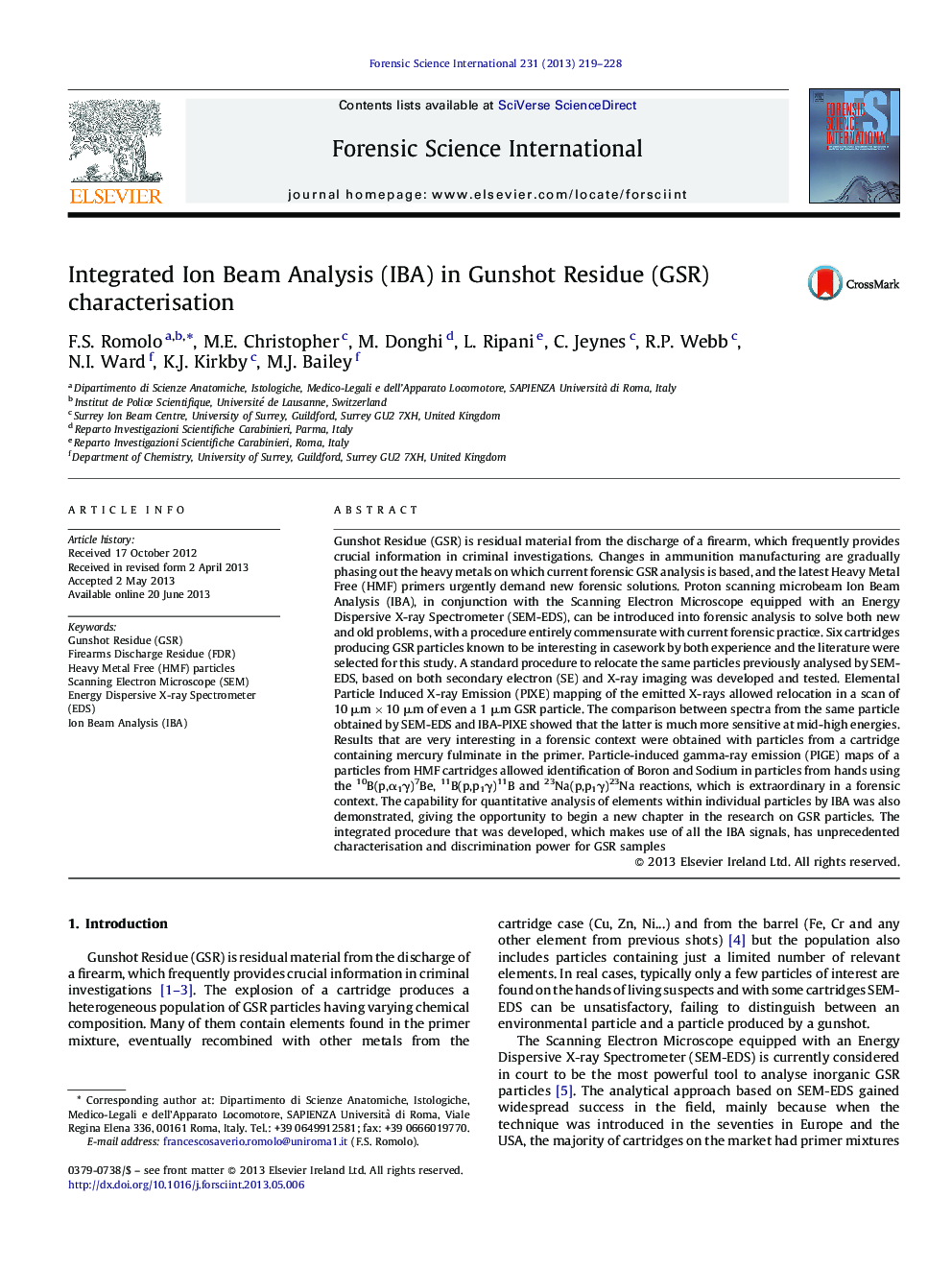| Article ID | Journal | Published Year | Pages | File Type |
|---|---|---|---|---|
| 95842 | Forensic Science International | 2013 | 10 Pages |
Gunshot Residue (GSR) is residual material from the discharge of a firearm, which frequently provides crucial information in criminal investigations. Changes in ammunition manufacturing are gradually phasing out the heavy metals on which current forensic GSR analysis is based, and the latest Heavy Metal Free (HMF) primers urgently demand new forensic solutions. Proton scanning microbeam Ion Beam Analysis (IBA), in conjunction with the Scanning Electron Microscope equipped with an Energy Dispersive X-ray Spectrometer (SEM-EDS), can be introduced into forensic analysis to solve both new and old problems, with a procedure entirely commensurate with current forensic practice. Six cartridges producing GSR particles known to be interesting in casework by both experience and the literature were selected for this study. A standard procedure to relocate the same particles previously analysed by SEM-EDS, based on both secondary electron (SE) and X-ray imaging was developed and tested. Elemental Particle Induced X-ray Emission (PIXE) mapping of the emitted X-rays allowed relocation in a scan of 10 μm × 10 μm of even a 1 μm GSR particle. The comparison between spectra from the same particle obtained by SEM-EDS and IBA-PIXE showed that the latter is much more sensitive at mid-high energies. Results that are very interesting in a forensic context were obtained with particles from a cartridge containing mercury fulminate in the primer. Particle-induced gamma-ray emission (PIGE) maps of a particles from HMF cartridges allowed identification of Boron and Sodium in particles from hands using the 10B(p,α1γ)7Be, 11B(p,p1γ)11B and 23Na(p,p1γ)23Na reactions, which is extraordinary in a forensic context. The capability for quantitative analysis of elements within individual particles by IBA was also demonstrated, giving the opportunity to begin a new chapter in the research on GSR particles. The integrated procedure that was developed, which makes use of all the IBA signals, has unprecedented characterisation and discrimination power for GSR samples
